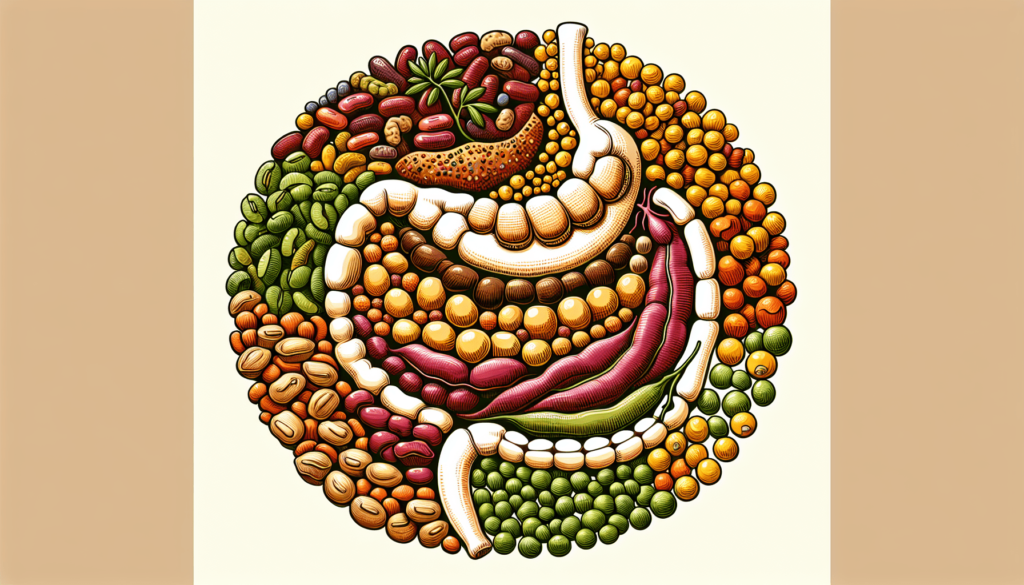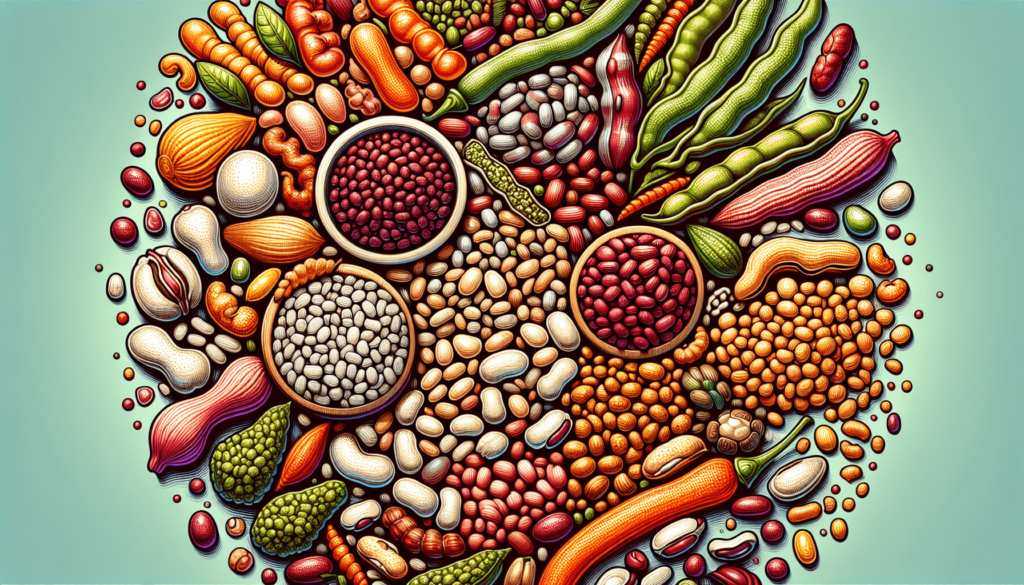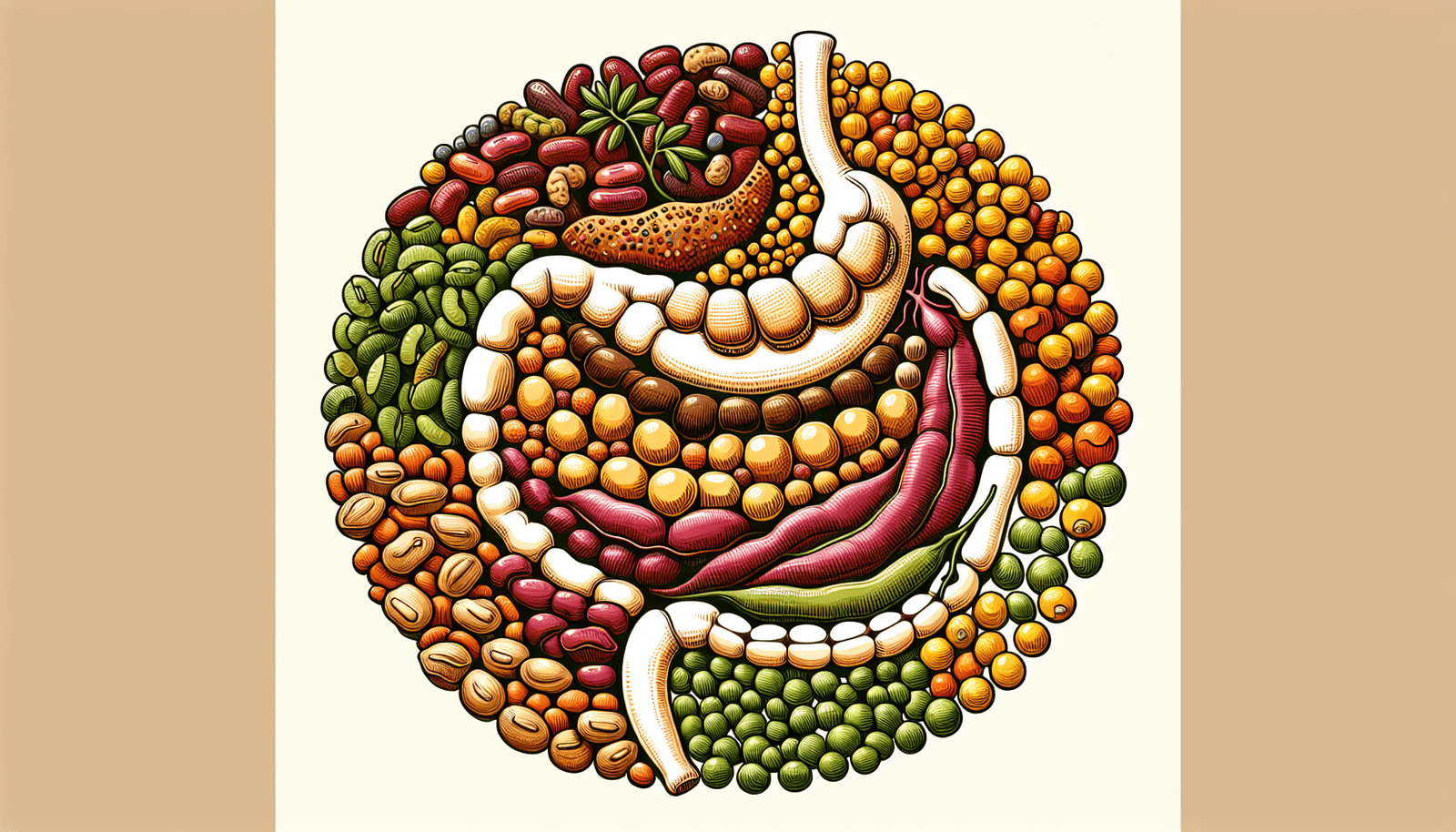If you’ve ever wondered about the impact of legumes on gut health, you’re not alone. There are quite a few common misconceptions floating around, causing confusion and concern. However, fear not! In this article, we’ll debunk some of these misconceptions and shed light on the true effects of legumes on your digestive system. So, sit back, relax, and let’s set the record straight on legumes and gut health.

Legumes cause gas and bloating
Legumes contain oligosaccharides
Legumes, such as beans, lentils, and chickpeas, contain a type of carbohydrate called oligosaccharides. These oligosaccharides are known for causing gas and bloating in some individuals. When consumed, these carbohydrates are not properly digested in the small intestine, leading to their arrival in the large intestine undigested.
Oligosaccharides are not properly digested in the small intestine
Unlike other carbohydrates, oligosaccharides are not efficiently broken down by the enzymes in our small intestine. This means that when we consume legumes, a significant portion of the oligosaccharides remains undigested as it travels through our digestive system.
Undigested oligosaccharides reach the large intestine
As the undigested oligosaccharides make their way into the large intestine, they provide a feast for the bacteria residing there. These beneficial bacteria, known as gut microbiota, eagerly ferment the oligosaccharides as a source of fuel.
Bacteria in the large intestine ferment these undigested oligosaccharides
The fermentation process carried out by the gut bacteria releases gases as a byproduct. These gases, including carbon dioxide, hydrogen, and methane, are responsible for the gas and bloating that individuals may experience after consuming legumes.
Fermentation produces gas and may cause bloating
The production of gas during fermentation can lead to bloating, discomfort, and flatulence. This is why many people associate legumes with these digestive symptoms. However, it’s worth noting that not everyone experiences significant gas and bloating from legume consumption, as individual tolerance may vary.
All legumes have the same impact on gut health
Different types of legumes have varying amounts of indigestible carbohydrates
While all legumes contain oligosaccharides, the exact amount of these indigestible carbohydrates can vary among different types of legumes. For example, lentils and chickpeas have been found to have lower levels of oligosaccharides compared to other legumes, such as kidney beans or black beans.
Amount of indigestible carbohydrates affects gas production
The amount of indigestible carbohydrates present in legumes directly influences the production of gas during fermentation in the large intestine. Legume varieties with higher levels of oligosaccharides are more likely to cause increased gas production and potentially more pronounced bloating.
Some legumes such as lentils and chickpeas have lower levels of indigestible carbohydrates
If you’re someone who experiences discomfort from gas and bloating after consuming legumes, it may be worth exploring different types of legumes. Lentils and chickpeas, for example, tend to have lower levels of indigestible carbohydrates compared to other legumes. This means that they may be better tolerated by individuals who are more sensitive to these types of carbohydrates.
Different legumes may have different impacts on gut health
Due to variations in the composition of each legume, including the presence of different types and amounts of indigestible carbohydrates, different legumes may have varying impacts on gut health. It’s important to pay attention to how your body responds to specific legumes and tailor your consumption accordingly.
Legumes cause inflammation in the gut
Legumes contain lectins
Lectins are proteins found in various foods, including legumes. These proteins have the ability to bind to cell membranes and can potentially contribute to gut inflammation in certain individuals.
Lectins are proteins that can bind to cell membranes
When lectins bind to the cells lining the intestines, they can disrupt the normal functioning of the gut barrier. This disruption may lead to increased permeability, or “leaky gut,” and trigger an inflammatory response in susceptible individuals.
High levels of lectins may cause gut inflammation
While lectins are found in legumes, it’s important to note that the levels of lectins vary among different legume varieties. Some individuals may be more sensitive to high levels of lectins, which could potentially result in gut inflammation and related symptoms.
Cooking legumes properly reduces lectin levels
Fortunately, cooking legumes can significantly reduce the levels of lectins present. Properly cooking legumes, such as by soaking and boiling, can help break down lectins and make them less likely to cause gut inflammation when consumed.
Inflammation caused by lectins is rare in healthy individuals
It’s essential to note that the occurrence of gut inflammation directly caused by lectins is relatively rare in healthy individuals with a well-functioning gut. Most people can safely consume cooked legumes without experiencing any adverse inflammatory effects.
Legumes are difficult to digest
Raw legumes contain antinutrients
Antinutrients are compounds present in various foods, including legumes, that can interfere with digestion and nutrient absorption. Raw legumes contain higher levels of antinutrients compared to cooked legumes.
Antinutrients can interfere with digestion and nutrient absorption
When consumed in large amounts, antinutrients found in legumes, such as phytates and trypsin inhibitors, can hinder the breakdown of proteins and impair the absorption of certain minerals like iron and zinc.
Soaking, boiling, or fermenting legumes reduces antinutrient levels
To make legumes more digestible and to decrease the levels of antinutrients, several cooking techniques can be employed. Soaking legumes before cooking, boiling them, or even fermenting legumes can effectively reduce the levels of antinutrients.
Properly prepared legumes are digestible for most individuals
By properly preparing legumes through techniques like soaking, boiling, or fermenting, the levels of antinutrients decrease, making them more digestible for most individuals. Cooking legumes thoroughly can help unlock their nutritional benefits and enhance their digestibility.

Legumes should be avoided by individuals with gut issues
Legumes are a good source of dietary fiber
Legumes are renowned for their high dietary fiber content. Fiber is essential for promoting regular bowel movements and maintaining a healthy gut.
Dietary fiber promotes regular bowel movements
Consuming adequate dietary fiber, such as that found in legumes, helps add bulk to the stool and supports bowel regularity. This can be particularly beneficial for individuals struggling with constipation or other gastrointestinal issues.
Legumes may support a healthy gut microbiome
The fiber in legumes acts as a prebiotic, which means it serves as fuel for the beneficial bacteria in our gut. By nourishing our gut microbiome, legumes can help support a healthy balance of gut bacteria.
Individuals with certain gut conditions should consult a healthcare professional
While legumes can provide significant benefits for gut health, individuals with specific gut conditions or sensitivities may still need to exercise caution. Consulting with a healthcare professional can help identify whether legumes are suitable for individuals dealing with issues like irritable bowel syndrome (IBS), inflammatory bowel disease (IBD), or other gut-related concerns.
Incorporating legumes can be beneficial for many individuals with gut issues
For most individuals with mild gut issues or no known intolerances, incorporating legumes into their diet can be highly beneficial. The fiber and other nutrients found in legumes can help maintain a healthy gut and alleviate symptoms related to various gut conditions.
Legumes are not suitable for a low-carb or ketogenic diet
Legumes contain carbohydrates
Legumes naturally contain carbohydrates, which may not be suitable for individuals following a low-carbohydrate or ketogenic diet. These diets require strict carbohydrate restriction to promote a state of ketosis.
Some legumes have a higher carbohydrate content
While legumes are generally considered a nutritious food, it’s worth noting that some legumes have a higher carbohydrate content compared to others. For individuals closely monitoring their carbohydrate intake, it may be necessary to limit or avoid legumes higher in carbohydrates, such as kidney beans or chickpeas.
Low-carb or ketogenic diets require strict carbohydrate restriction
To achieve and maintain a state of ketosis, low-carb or ketogenic diets typically require strict carbohydrate restriction. This involves limiting the intake of carbs from foods like legumes that contain higher levels of carbohydrates.
Portion control and mindful selection can still allow for legume consumption
While legumes may not be suitable for those strictly following a low-carb or ketogenic diet, individuals who are more flexible with their carbohydrate intake can still enjoy legumes in moderation. Practicing portion control and selecting legumes that are lower in carbohydrates can allow for occasional legume consumption without significantly impacting ketosis.
Legumes should be avoided to prevent weight gain
Legumes are nutrient-dense
Legumes pack a nutritional punch, as they are rich in essential nutrients like vitamins, minerals, and antioxidants. These nutrient-dense properties make legumes a valuable addition to a balanced diet.
Legumes provide a good source of plant-based protein
For individuals following plant-based diets or looking to incorporate more plant-based protein sources, legumes are an excellent choice. They offer a substantial amount of protein, which can help promote satiety and support muscle maintenance and growth.
Protein and fiber in legumes promote satiety
The combination of protein and fiber found in legumes can help promote a feeling of fullness or satiety. This can be beneficial in managing appetite and potentially reducing overall calorie intake, supporting weight management efforts.
Including legumes as part of a balanced diet can support weight management
Contrary to popular belief, legumes should not be avoided to prevent weight gain. In fact, including legumes as part of a well-balanced diet can be beneficial for weight management. Their combination of protein, fiber, and essential nutrients can contribute to a healthy, satisfying diet.
Legumes contribute to nutrient deficiencies
Legumes contain phytates
Phytates are natural compounds found in legumes that can bind to certain minerals, such as iron, zinc, and calcium. These interactions can hinder the absorption of these minerals in the body.
Phytates can bind to certain minerals, inhibiting their absorption
When phytates bind to minerals, they form complexes that are less bioavailable to our bodies. This means that even though legumes contain essential minerals, the presence of phytates can reduce the amount of these minerals that our bodies can absorb and utilize.
Soaking, fermenting, or cooking legumes reduces phytate levels
To minimize the impact of phytates on mineral absorption, soaking, fermenting, or cooking legumes can be beneficial. These processes help break down phytates, leading to a decrease in their levels and improving the availability of minerals in legumes.
Combining legumes with a varied diet can prevent nutrient deficiencies
While it’s true that legumes contain phytates that can interfere with mineral absorption, incorporating a variety of nutrient-rich foods in your diet can help compensate for any potential nutrient deficiencies. By combining legumes with other mineral-rich foods, such as leafy greens or whole grains, you can ensure a well-rounded intake of essential nutrients.
Legumes are only beneficial for vegetarians and vegans
Legumes are a versatile and affordable source of plant-based protein
Legumes are often hailed as a staple protein source for vegetarians and vegans. However, their benefits extend beyond these dietary preferences. Legumes offer a versatile and affordable source of plant-based protein for individuals following any type of diet.
Vegetarian and vegan diets often rely on legumes for protein
Due to their high protein content, legumes are a popular choice for individuals following vegetarian and vegan diets, where plant-based protein sources play a significant role. Legumes provide a substantial and sustainable alternative to animal-based protein sources.
Legumes can be part of a balanced diet for individuals with various dietary preferences
Regardless of whether you follow a vegetarian, vegan, or omnivorous diet, legumes can be a valuable addition to a balanced eating plan. They offer a wide range of nutrients, including protein, fiber, vitamins, and minerals, making them suitable for individuals with diverse dietary preferences and goals.
Including legumes can increase nutrient diversity
Incorporating legumes into your meals can help diversify your nutrient intake. As legumes possess unique nutritional profiles, including them in your diet can provide additional health benefits and contribute to a more varied and well-rounded nutrient intake, regardless of your dietary preferences.
Individuals with allergies should avoid legumes
Legumes belong to the same family as peanuts
Legumes, including common varieties like beans and lentils, belong to the Fabaceae family. This family also includes peanuts, which are technically legumes, not nuts.
Peanut allergies do not necessarily imply an allergy to other legumes
While peanut allergies can be severe and often life-threatening, they do not necessarily imply an allergy to other legumes. Allergies to legumes like beans, lentils, or chickpeas are less common than peanut allergies.
Individuals with legume allergies should consult a healthcare professional
If you suspect an allergy to legumes or have experienced symptoms after consuming legumes, it’s essential to consult a healthcare professional for proper diagnosis and guidance. They can conduct allergy testing and determine if avoiding legumes is necessary.
Legume allergies are less common than other food allergies
While some individuals may have specific allergies to legumes, it’s worth noting that legume allergies are generally less common compared to allergies to other foods, such as nuts, shellfish, or eggs. Most individuals can safely consume legumes without any adverse allergic reactions.
By understanding the impact of legumes on gut health and debunking common misconceptions, you can make informed choices about incorporating legumes into your diet. Remember, individual tolerances and preferences may vary, so it’s essential to listen to your body and consult with healthcare professionals if needed. With their many health benefits and versatility, legumes can be a valuable addition to a well-balanced and diverse diet.

